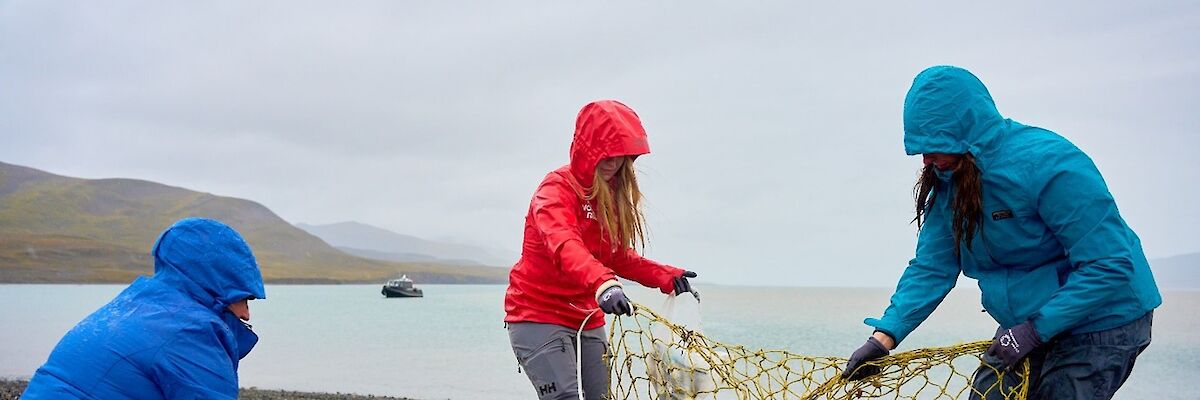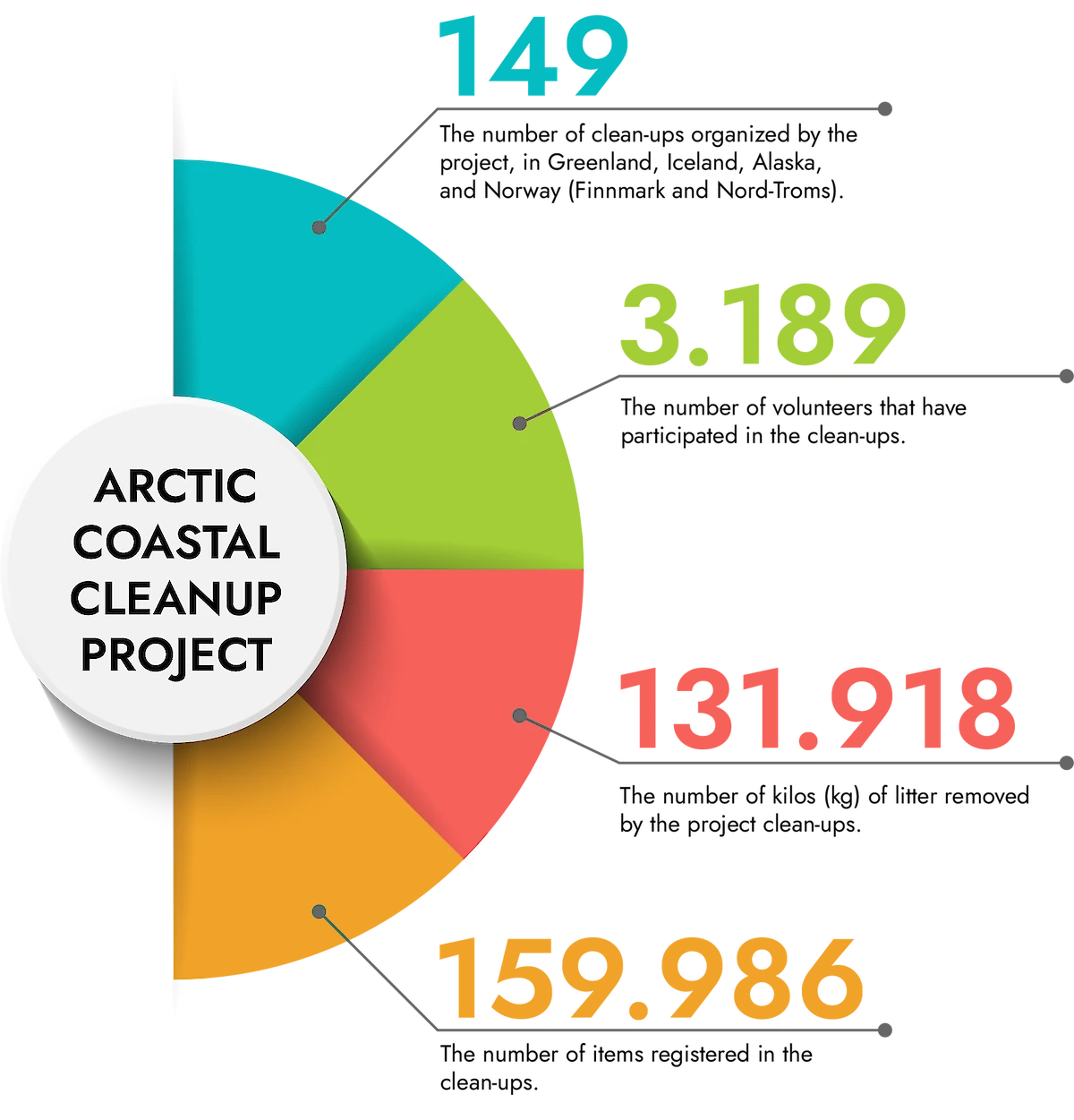
Arctic Coastal Cleanup
The Arctic Coastal Cleanup project has been in PAME's work plan since 2021. It is an international project led by Keep Norway Beautiful and Ocean Conservancy. The initiative aims to support clean-up efforts and prevent littering in the Arctic through organized clean-up activities, data collection and outreach.
“Marine debris is a significant and growing problem for the people and wildlife in this region. The distance between communities and often harsh conditions compounds these impacts by making removal and proper disposal difficult and costly. Collaborative efforts to share knowledge, strategies, and solutions are essential to making progress on this issue. The Arctic Cleanup project has been an important initiative for fostering international cooperation and partnership.” - Kristina Tirman, Arctic Marine Debris Manager, Ocean Conservancy
A status report for the project for 2021-2024 was published in 2025 as a PAME Ministerial deliverable.
Despite its remote location, the Arctic is no escape from marine litter and plastic pollution. Microplastics and marine litter have been found in the water column, in sea ice, on the seafloor, in sediments and on the coastal zone (Hallanger et al., 2024). The litter originates from local and regional sources, as well as long-range transport of debris via ocean currents (Hallanger et al., 2024). Additionally, scientists warn of a possible sixth “plastic gyre” (accumulation of marine litter due to ocean currents) in the Barents sea (Cózar et al., 2017; Huserbråten et al., 2022).
Litter and plastics pose significant threats to wildlife, as animals can become entangled or ingest these (Bergmann et al, 2022). Furthermore, both microplastics and larger debris accumulate in the environment and are persistent to degradation, and research show that plastics has infiltrated all levels of the Arctic food web (Bergmann et al, 2022). Additionally, plastic can leach harmful chemicals to the environment, or transport alien species that might be a disturbance to the delicate ecosystem of the Artic (Maddela et al., 2023; Hallanger et al, 2024). Given these threats to the Arctic environment, plastic pollution in the Arctic marine environment has been identified as a priority for the Arctic Council.
Main goals for the Arctic Cleanup Project are:
- Remove (marine) litter from Arctic regions
- Increase the extent of voluntary clean-ups
- Acquire more knowledge about litter in the Arctic
- Build a network across organizations in the region
Main activities
Arctic Cleanup has organized clean-ups in Greenland, Iceland, Alaska, and Norway (Finnmark and Nord-Troms). The project collaborates with local clean-up coordinators and volunteers in the different locations. In addition, a regionally adapted protocol for data collection has been developed and is utilized during all clean-ups. This protocol aims to provide a clearer understanding of the littering situation – including the types and potential sources of the litter – in the Arctic region.

Based on the experiences and knowledge this project has generated, we offer the following recommendations:
1: Continue and strengthen voluntary cleanup efforts in the Arctic by:
- Ensuring cooperation by strengthening and expanding the network of local cleanup partners.
- Gathering data on litter through citizen science and cleanup efforts.
- Communicating knowledge and experiences to local and regional authorities and stakeholders.
2: Secure stable financing for local cleanup partners over time:
- Create sustained engagement of organizations that can adopt a long-term approach and strategy for cleanups and litter mitigation.
- Involve as many communities, tribes, organizations and individuals as possible in the fight against littering.
3: Prevent litter from key sources:
- Engage in dialogue and implement concrete initiatives, such as industry seminars for the fishing sector.
- Implement International Organization for Standardization (ISO) standards for waste management on fishing vessels.
See more in the project status report - published in 2025 here.
In the years ahead, the Arctic Cleanup will prioritize building a robust network of local organizations, communities and Tribes involved in litter removal across the region. By engaging and connecting more local participants, the project aims to foster a strong and resilient community dedicated to protecting the Arctic from plastic pollution. Arctic Cleanup aims to create an arena where clean-up organizations across the region can come together to share their knowledge and experiences. By connecting like this, we hope to make everyone feel less alone in the fight against marine litter, even with the long distances and sparse populations.
Ongoing data collection will play a key role in deepening our understanding of the issue and guiding effective strategies to prevent littering in this unique and vulnerable environment.
Contact information
- Heidi Gromstad, Keep Norway Beautiful: heidi.gromstad@holdnorgerent.no
- Kristina Tirman, Ocean Conservancy: ktirman@oceanconservancy.org





 Arctic Council Working Group
Arctic Council Working Group 